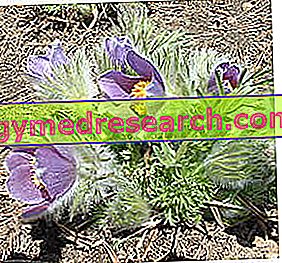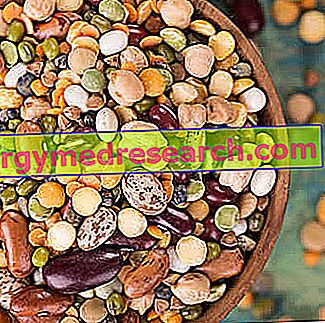
Information on Tribulus ZMB - KEFORMA
TRIBULUS ZMB - KEFORMA
Food supplement based on Tribulus Terrestris and Zinc, Magnesium and Vitamin B6
FORMAT
Pack of 100 capsules
COMPOSITION
Tribulus terrestris dry extract titrated at 40%
Saponins 46.4%
Magnesium aspartate
Zinc monomethionine
Vitamin B6
Silicon dioxide
Product features Tribulus ZMB - KEFORMA

Tribulus Terrestris - plant used classically in Chinese and Ayurvedic medicine, for tonic and energizing properties. Originally from India, it is then rooted in North America as a weed, to come back into fashion in recent decades.
| Nutritional Information per capsule | |
| kcal / Kj Protein (Nx6, 25) carbohydrates Grassi Tribulus Terrestis of which saponins Magnesium Vitamin B6 Zinc | 0/0 absent absent absent 900 mg 360mg 60 mg 3 mg 22.5 mg |
Its current use, in fact, is mainly due to the much sought after anabolic and aphrodisiac effect, sought after by many athletes to improve their physical and muscular abilities.
The analytical study of the plant showed the presence of various compounds, including powerful antioxidants (flavonoids), alkaloids, starches and saponins; in particular to the latter, and with precision to the protodioscin, the stimulating effect of the whole plant is due. Concentrated mainly at the level of the leaves, this molecule has proved capable of increasing the levels of LH, Testosterone and derivatives, improving spermatogenesis and increasing the frequency of the couplings; all these actions have been demonstrated exclusively in laboratory animals, in which there has also been a vasodilatory action. However, the characterization of the therapeutic properties of the plant continues to this day, testing the antioxidant, antidiabetic, hypocholesterolemic and antitumor abilities of the various saponins present in tribulus terrestris on cellular systems and laboratory animals.
Zinc: trace element present in nature and introduced through the diet through foods of animal and vegetable origin. The most bioavailable form is certainly that linked to methionine, which is found in common products of animal origin, on the contrary instead of that complexed with phytic acid typical of vegetable products. Its daily requirement, estimated at around 7 mg for adult women and 10 mg for men, is generally satisfied with the common diet. Severe zinc deficiency results in growth retardation, skin rashes, chronic and profuse diarrhea, fatigue, loss of appetite, immune system deficiency and general malaise.
The deficiency symptomatology, which occurs exclusively for particular risk categories, is related to the biological functionalities of this element:
- Cofactor of different enzymatic classes;
- Structural factor: guarantees the functionality of transcription factors, antioxidant enzymes and membrane structural proteins;
- Regulator of gene transcription, cell cycle, intracellular signalling and hormonal function.
Given the increased excretion of zinc that occurs as a result of intense physical activity, generally accompanied by a reduction in muscle strength and the ergogenic capacity of the muscle, supplementation with zinc at 3mg / kg / day has proved to be capable of saving loss of testosterone and thyroid hormones following intense training
Magnesium: trace element introduced with the diet through whole grains, almonds and peanuts, fruit, vegetables and foods of animal origin. Magnesium is found in the human body particularly concentrated at bone and muscle level, where it performs part of its biological functions, including:
- Energy role: it is a cofactor of numerous enzymes involved in glucose metabolism and in ATP synthesis;
- Anabolic role: participates in the synthesis of the most important macromolecules of our organism;
- Structural role: it is part of the formation of cell membranes and bone tissue;
- Modulator role: participates in the intracellular singalling and the regulation of the cell's vitality;
- Conveyor role: facilitates entry into the cell of other ions, such as calcium and potassium, thus regulating nerve, muscle and cardiac function.
Its daily requirement should be around 350/400 mg, with 10/20% increases due to increased renal secretion that occurs after intense physical exercise. Furthermore, integration in sports has proven effective in optimizing glucose metabolism (reducing lactate formation), improving aerobic capacity (increasing hemoglobin levels), and assisting the anabolic phase (increasing levels of testosterone).
Vitamin B6: pyridine derivative introduced in the form of pyridoxine, absorbed at jejunal level and conveyed to the liver bound to albumin. At this level, vitamin B6 is transformed first into pyridosamine, then into pyridoxal and then phosphorylated, then activated. From the liver it will then be released into the circulation and stored in the various tissues, where it will be able to perform its biological role.
- Increases blood glucose levels: it favors glycogenolysis and gluconeogenesis;
- Promotes the synthesis of neurotransmitters, such as serotonin, dopamine, norepinephrine and GABA.
- Leads the synthesis of the EME group, necessary for hemoglobin to bind oxygen;
- It allows the synthesis of Niacin, starting from tryptophan;
- Modulates hormonal action.
Its daily requirement is around 1 / 1.5 mg, but even in this case the cases of deficiency are very rare.
Rationale - Tribulus ZMB - KEFORMA
At the moment there are no studies involving the simultaneous administration of trace elements and tribulus terrestris. However, by breaking down the product into its main components, it is possible to make a critical evaluation of its components:
- Tribulus terrestris: animal studies show positive results in increasing the level of androgens, which however are not absolutely maintained on humans. Studies show the total absence of improvements in terms of lean mass, muscle strength and hormonal balance.
- Zinc, Magnesium and Vit.B6: already known as ZMA, the synergy of these elements has been evaluated by several studies. One of these, conducted by prof. Shines and never published, has recorded an increase in athletic performance and testosterone and IGF 1 blood levels following supplementation for 8 weeks with 30 mg of zinc, 450 mg of Magnesium and 10.5 mg of Vitamin B6. Subsequent studies, replicated on more numerous samples, denied the aforementioned results, reporting no benefit whatsoever.
Product features - Tribulus ZMB - KEFORMA
The association between Zinc, Magnesium, Vitamin B6 and tribulus terrestris, was born with the aim of increasing endogenous testosterone synthesis. However, these two products, known to the sports world as natural endogenous testosterone stimulators, have not found the same success in the scientific world, which seems to confirm its uselessness in healthy and trained individuals.
The point of note is also the dosage that appears unbalanced for magnesium, if one wanted to replicate the dosage used by Prof. Brilla.
It should also be stressed that the fibers present in the dry tribulus extract and the saponins, could definitely interfere with the absorption of the two trace elements, significantly reducing their bioavailability.
Recommended use by the company - Tribulus ZMB - KEFORMA
Swallow one capsule before meals
Use in sports - Tribulus ZMB - KEFORMA
To date there is no single and effective dosage for tribululs. This limitation is in fact due to the presence of studies showing the ineffectiveness of the plant at various dosages, the absence of pharmacokinetic studies and also the different titration in saponins and protodioscin between the different products.
As for the trio Zinc, Magnesium and Vit.B6, with the dosage present in the capsules, it is impossible to replicate the supplementary scheme used by Prof. Brilla, in his study.
However, the integration with 10mg / kg / day for magnesium and 3mg / kg / day for zinc remains valid, but it cannot be managed with this product.
Tribulus side effects ZMB - KEFORMA
Fortunately, the side effects also seem to be insignificant, although there have been cases of abdominal pain. To be documented is a study that reported the presence of gynecomastia following the chronic use of tribulus terrestris.
Zinc: high amounts of zinc introduced are responsible for abdominal pain, diarrhea, nausea and vomiting. Chronic zinc administration (60 mg / day total) is associated with copper deficiency.
Magnesium: high amounts of magnesium are responsible for profuse diarrhea. The increase in serum magnesium levels is instead associated with hypotension, confusion, heart rhythm disorders, deterioration of renal function, fatigue, difficulty in breathing, and even cardiac arrest. The dose of safe supplementation appears to be 350 mg / day.
Vitamin B6: chronic administration can be responsible for damage to the nervous system and neuropathies of various levels already at doses higher than 200mg / day.
Interactions Tribulus ZMB - KEFORMA
Although the pharmacokinetics of this product is not characterized, it is known that saponins can interfere with the absorption of different substances, significantly changing their bioavailability.
Among the typical effects of saponins in general we can remember the expectorant, mediated by an irritant action on the mucosa, cholesterol-lowering, anti-edema and anti-inflammatory.
Zinc: in addition to interfering with other trace elements such as copper, it could reduce the absorption of some antibiotics such as tetracyclines, reducing their effectiveness.
Magnesium: may interfere with some antibiotics, tranquilizers and oral anticoagulants, reducing their effectiveness.
Precautions for use Tribulus ZMB - KEFORMA
The product is contraindicated in cases of renal or hepatic disease, cardiovascular disease and / or hypertension, during pregnancy, during lactation and under 14 years.
This article, elaborated on the critical re-reading of scientific articles, university texts and common practice, is for informational purposes only and is therefore not a medical prescription. It is therefore always necessary to consult your doctor, nutritionist or pharmacist before starting to use any kind of supplement . Further information on the critical analysis of Tribulus ZMB - KEFORMA.
| BIBLIOGRAPHY |
The effect of five weeks on elite strength and muscle composition during preseason training in elite rugby league players. Rogerson S, Riches CJ, Jennings C, Weatherby RP, Meir RA, Marshall-Gradisnik SM. J Strength Cond Res. 2007 May; 2: 134-9. Chinese. Short term impact of Tribulus terrestrial intake on doping control analysis of endogenous steroids. Saudan C, Baume N, Emery C, Strahm E, Saugy M. J Ethnopharmacol. 2003 Apr; 85 (2-3): 257-60. Al-Ali M, Wahbi S, Twaij H, Al-Badr A. Boll Chim Farm. 1998 Dec; 137 (11): 473-5. Effect of Tribulus terrestris L. saponin mixture on some smooth muscle preparations: a preliminary study.Arcasoy HB, Erenmemisoglu A, Tekol Y, Kurucu S, Kartal M. The hormonal effects of Tribulus and its role in the management of male erectile dysfunction - an evaluation using primates, rabbit and rat.Gauthaman K, Ganesan AP. Int Braz J Urol. 2007 Jul-Aug; 33 (4): 554-8; discussion 558-9. Free serum testosterone level in male rats treated with Tribulus alatus extracts.El-Tantawy WH, Temraz A, El-Gindi OD. Ann NY Acad Sci. 2006 Nov; 1084: 391-401. Amin A, Lotfy M, Shafiullah M, Adeghate E. Breast. 2004 Oct; 13 (5): 428-30. Gynaecomastia and the plant product "Tribulis terrestris".Jameel JK, Kneeshaw PJ, Rao VS, Drew PJ. Zhong Yao Cai. 2003 May; 26 (5): 341-4. [Effect of saponin from Tribulus terrestris on hyperlipidemia]Chu S, Qu W, Pang X, Sun B, Huang X. [Hypoglycemic effect of saponin from Tribulus terrestris] Li M, Qu W, Wang Y, Wan H, Tian C. Zhong Yao Cai. 2002 Jun; 25 (6): 420-2. Chinese. Effects of anabolic precursors on serum testosterone concentrations and adaptations to resistance training in young men.Brown GA, Vukovich MD, Reifenrath TA, Uhl NL, Parsons KA, Sharp RL, King DS. Ann Acad Med Singapore. 2000 Jan; 29 (1): 22-6. Proerectile pharmacological effects of Tribulus terrestris extract on the rabbit corpus cavernosum.Adaikan PG, Gauthaman K, Prasad RN, Ng SC. Ann Acad Med Si sett.ngapore. 2000 Jan; 29 (1): 22-6. |



